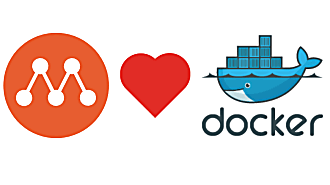Nathan Hart
on 1 February 2023
Multipass 1.11 is here!
This release has some particularly interesting features that we’ve been wanting to ship for a while now. We’re excited to share them with you!
For those who aren’t familiar with Multipass, it’s software that streamlines every aspect of managing and working with virtual machines. We’ve found that development, particularly for cloud applications, can often involve a huge amount of tedious work setting up development and testing environments. Multipass aims to solve that by making the process of creating and destroying VMs as simple as a single command, and by integrating the VM into your host machine and your development flow as much as possible.
That principle of integration is one of the main focuses we had for the 1.11 release. There are two major features out today that make Multipass much more integrated with your host machine – native mounts and directory mapping.

Performance boost
Performance has always been in Multipass’ DNA – we try to keep it as lightweight as we can so that nothing gets between developers and their work. With the 1.11 release, we’ve taken another big step forward.
With the new native mounts feature, Multipass is getting a major performance boost. This feature uses platform-optimized software to make filesystems shared between the host computer and the virtual machine much faster than before. In benchmarking, we’ve seen speed gains of around 10x! For people sharing data with Multipass from their host machine, this is a huge time saver.
Multipass is one of the few VM management tools available to developers on Apple silicon. Performance mounts make the M1 and M2 even faster platforms for Ubuntu. For those who don’t remember, Multipass can launch VMs on the Apple M1 and M2 in less than 20 seconds.
User experience
Multipass’ performance leveled up with this release, and the user experience did as well! Directory mapping is a new way to be more efficient than ever with Multipass. Multipass has supported command aliasing for some time now, but one drawback of aliasing alone is that it loses the context of where the command is executed in the filesystem. Commands like docker-compose, for example, are context sensitive. They may rely on certain files being present in the working directory, or give different results depending on where they are run.
Directory mapping maintains the context of an aliased command, meaning that an aliased command sent from the host will be executed in the same context on the VM. This feature has the potential to make it feel like you are running linux programs natively on your Mac or Windows terminal.

Other upgrades
In addition to directory mapping, Blueprints now allow for alias and workspace definitions, meaning you can now spin up a new VM and start using aliased (and context-sensitive) commands in a shared filespace with no additional configuration required. Look for some examples in the near future!
Some other notable upgrades include the `transfer` command and UEFI booting. The `transfer` command now allows for recursive file transfers. This should make it much easier to transfer entire directories as opposed to individual folders or files. Multipass now boots its instances via UEFI which means we are able to support Ubuntu Core 20 and 22 for our IoT developers.
To get started with Multipass, head to our install page or check out our tutorials. We always love to hear feedback from our community, so please let us know what you’re up to by posting in discourse, or dropping in for our office hours.



